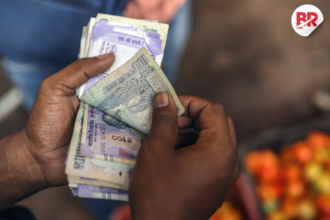
Oil prices are steady, but tensions are bubbling beneath the surface.
On Tuesday morning, Brent crude rose slightly by 10 cents to $66.84 per barrel. U.S. West Texas Intermediate (WTI) also inched up by 9 cents to $65.20. This comes after prices fell earlier in the day. The reason? Everyone’s waiting to see what OPEC+ decides next.

What’s OPEC+ Planning?
OPEC+, a group of top oil-producing countries led by Saudi Arabia and Russia, will meet on July 6. According to Reuters, the group may raise production by 411,000 barrels per day in August. This follows similar hikes already made in May, June, and July.
If this happens, OPEC+ will have added 1.78 million barrels per day (bpd) in total this year. That’s over 1.5% of global oil demand.
Experts say this move could keep the world well supplied with oil for the rest of 2025.
Why Are Prices Not Falling?
With more supply, you’d expect prices to fall sharply. But that’s not happening—yet.
One reason is the large spare capacity still held by OPEC. That means if needed, they can pump even more oil quickly. ING strategists say this extra cushion is comforting the market. For now, no one expects a shortage.
Also, the market is unsure about what’s happening with U.S. tariffs. U.S. Treasury Secretary Scott Bessent hinted that tariff rates could rise again after July 9. If that happens, global trade could slow down, and oil demand might drop.
Also Read Asia Stocks Gain as S&P 500 Hits Record; Nikkei Drops 1.2% on Tariff Concerns
What’s Next for Oil Prices?
Morgan Stanley has predicted Brent crude could drop to $60 by early next year. They see global supply rising and fewer war-related risks. A major factor in past price hikes—tensions between Israel and Iran—has cooled off after a ceasefire was announced by President Donald Trump.
In mid-June, oil spiked past $80 when the U.S. bombed Iran’s nuclear sites. But the price quickly fell again once peace talks began.
Why This Matters to India
India imports over 80% of its oil. So every small move in global prices hits your pocket. If OPEC+ pumps more oil, prices may stay low. That’s good news for fuel costs, inflation, and the economy.
But if global tensions rise or if tariffs hit growth, oil could turn volatile again.
The oil market is walking a tightrope. More supply is coming, but so are risks. With OPEC+ set to meet on July 6, the world—including India—waits to see what happens next.
Also Read Why Is Japan Being Pushed to Take U.S. Rice? No Compromise on Farming, Says Tokyo












